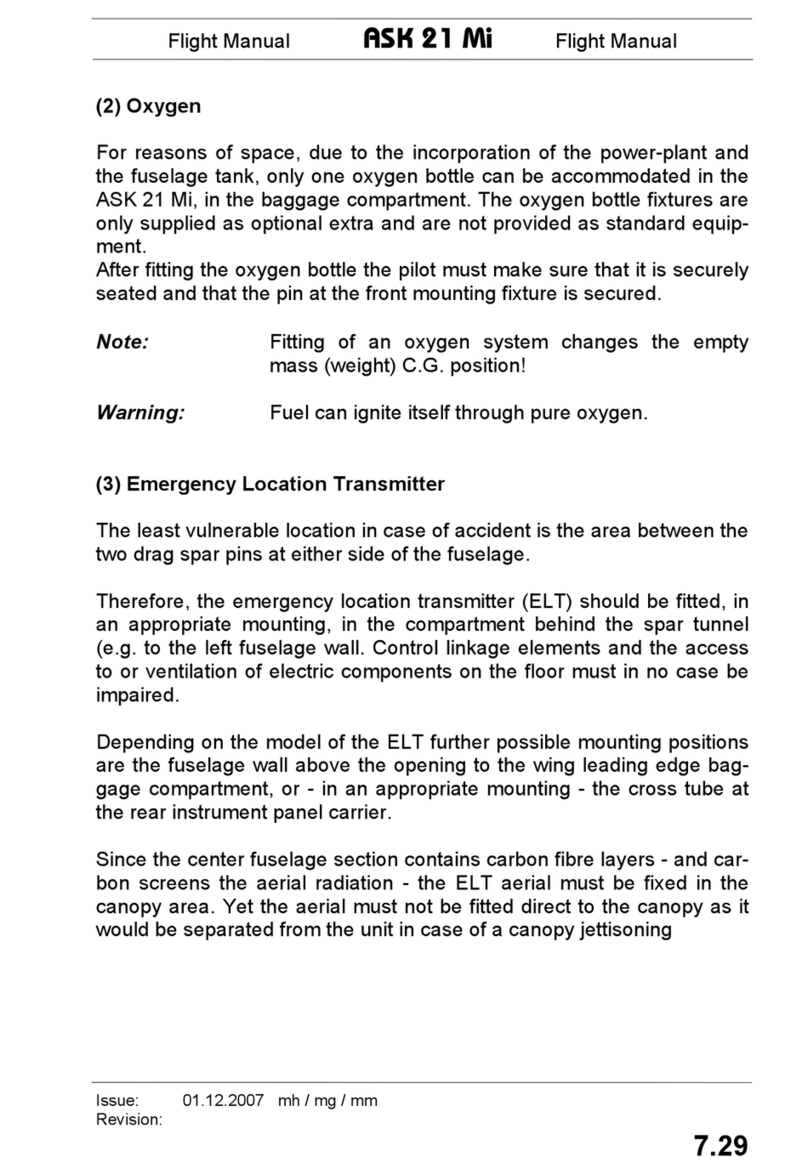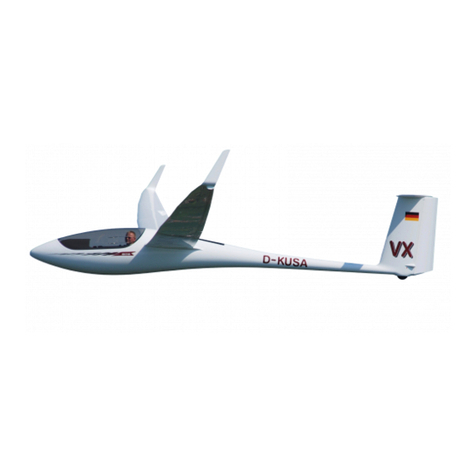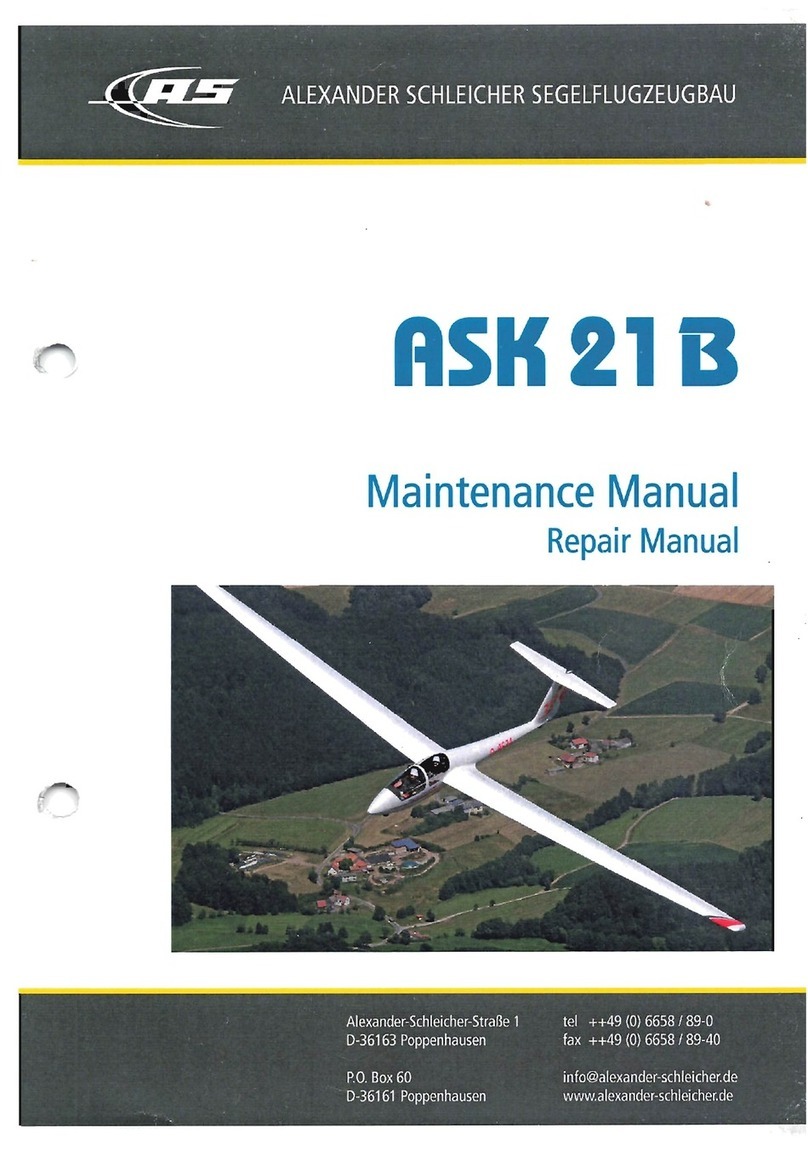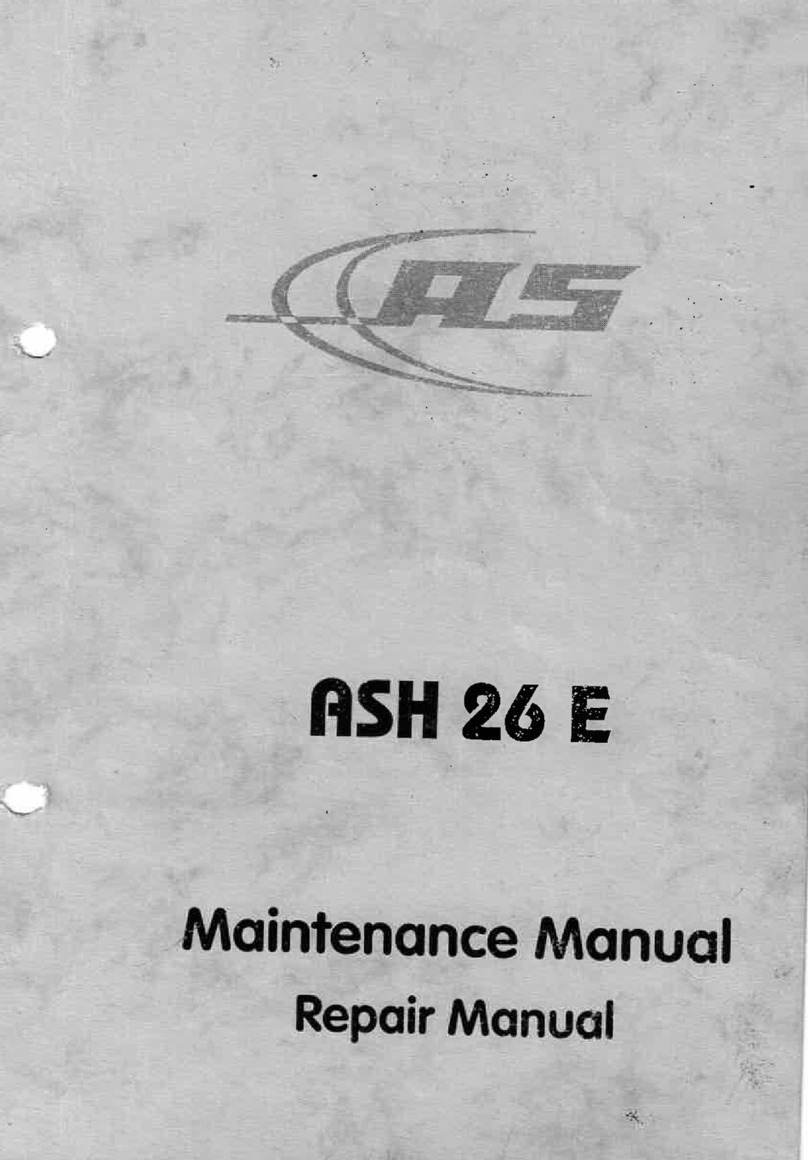
Flight Manual ASK 21 Mi Flight Manual
App. Issue: 01.12.2007 mh / mg / mm
Revision: TN21 / 21.09.22
2.10
2.10 Flight Crew
For solo flights the pilot must occupy the front seat.
With two up, the pilot in command occupies the front seat – unless the
occupants agree prior to the flight that the pilot in command occupies the
rear seat. This is only possible on the condition that all necessary operat-
ing elements and instruments are available in the rear seat and that the
pilot is familiar with the operation of the aircraft from this position.
The minimum front seat payload is shown in the Operating Limitations
Placard affixed in the front cockpit at the right wall (DATA and LOADING
PLACARD).
One third of the weight of the rear pilot contributes to the payload in the
front seat.
Lack of payload must be compensated by additional trim ballast weight.
For this refer to the Mass and Balance Form in Section 6 and the descrip-
tion of trim ballast in Section 7.
2.11 Types of Operation
Flights may be carried out in accordance with day VFR.
Cloud Flying is permissible in compliance with the extended minimum
equipment (see Section 2.13).
NOTE
The legal regulations of the appropriate civil aviation authority with
regard to any operational requirements have to be met. For exam-
ple for US operators, “Cloud Flying” is considered flying in Instru-
ment Meteorological Conditions (IMC) and requires an Instrument
Flight Rules (IFR) clearance in the U.S.

































